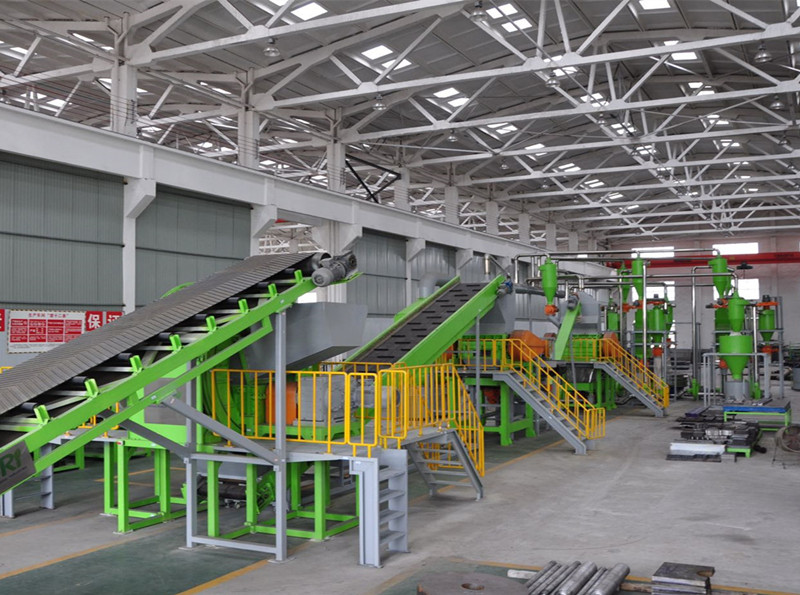Feb. 14, 2025
With the rapid development of the automotive industry, China has established itself as the world's second-largest tire producer, generating over 112 million waste tires annually, which amounts to about 3.2 million tons. This figure has been growing at a double-digit rate each year. The escalating issue of "black pollution" has further exacerbated the already delicate ecological environment in the country. The introduction of waste tire rubber powder equipment plays a crucial role in promoting environmental protection and optimizing resource utilization.
The advent of waste tire recycling equipment signifies a turning point in addressing the ongoing challenges posed by "black pollution." This innovative machinery is pivotal in converting discarded tires into valuable resources, aligning with the national objective of fostering a green and eco-friendly economy. The concept of "turning waste into treasure" through these advancements has made significant contributions toward environmental conservation and efficient resource management.
Waste tire recycling equipment effectively controls "black pollution" and enhances the processing of waste tires into rubber powder, facilitating a greener transformation.
In today's rapidly evolving market economy, industrial advancement remains a cornerstone of development. Emphasizing the sustainable and environmentally conscious utilization of waste tires is essential for guiding future economic growth. Recent government policies reflect a stringent commitment to environmental protection and support for waste resource recycling, indicating that sustainability and waste reuse will be pivotal in China’s development trajectory. The waste tire recycling equipment serves as a vital asset for processing waste tires into rubber powder.

Some individuals have recognized the promising potential of the rubber powder recycling industry but remain unclear about the machinery and processes involved in rubber powder production. The presence of subpar equipment manufacturers further complicates market cultivation. Therefore, it is critical to approach investments in waste tire rubber powder projects judiciously rather than impulsively.
Before embarking on a project to recycle waste tires into rubber powder, it is vital to understand all the production stages involved. This includes researching the current market prices and supply of waste tires, identifying the number of manufacturers producing waste tire recycling equipment, comparing the prices and quotations from various suppliers, and determining if there are sales channels available for the produced rubber particles. Addressing these inquiries will provide a comprehensive understanding of the waste rubber recycling market, enabling targeted and informed investment decisions.
The future of the waste rubber powder and recycled rubber industry is highly promising. China faces a significant demand for rubber; however, domestic production of natural and synthetic rubber fulfills only a quarter of the need, necessitating substantial imports. This growing demand, compounded by the increasing quantity of waste tires and rubber products, presents a significant challenge. Statistics indicate that the annual tire scrap volume in China exceeds 3.5 million tons and grows by approximately 10% yearly. Most of these tires, unable to be utilized comprehensively, contribute to industrial waste and environmental pollution, highlighting the urgency of effective rubber recycling solutions.
In recent years, the waste rubber processing and recycled rubber industry have flourished, finding applications in tire manufacturing, plastic runways, waterproof rolls, and conveyor belts. Incorporating rubber powder or recycled rubber into natural rubber (possibly up to 50% for general rubber products) enhances both the static and dynamic properties of rubber products, improving fatigue resistance. International practices show that integrating 20% fine rubber powder into tire products can boost wear resistance and extend tire longevity. Consequently, the reclaimed rubber industry symbolizes an essential path for the comprehensive utilization of waste tire resources, effectively addressing environmental pollution, transforming waste into valuable resources, lowering rubber product costs, and alleviating the substantial gap in domestic rubber supply and demand, leading to rich market opportunities.
The structural makeup of the waste tire recycling equipment production line is integral for transforming waste rubber into valuable resources. After processing, typical waste rubber finds applications as playground surfaces, rubber flooring, and more. It is essential to understand the composition of the equipment that constitutes a complete waste tire recycling production line.
This production line processes waste tires into fine rubber particles while fully separating the three raw materials present in tires: rubber, steel wire, and fiber.
The primary components of the waste tire recycling production line include a tire wire drawing machine, tire cutting machine, tire shredder, steel wire separator, rubber particle machine, fiber separator, and tire grinder.
Since different manufacturers have varying specifications regarding rubber crushing's fineness, it is essential to conduct an investigation prior to purchasing and make decisions based on specific requirements. If special needs arise, communication with manufacturers for customized design and production of waste tire recycling equipment is advisable.
44
0
0
All Comments (0)
Previous: None
Next: None
If you are interested in sending in a Guest Blogger Submission,welcome to write for us!
Comments